![]()
Publication
Experience
Design Project
Exhibition & Award
Curriculum Vitae
Portfolios
Google Scholar
Design Project
Throughout my years as a Ph.D. researcher at National Taiwan University of Science and Technology (NTUST), I participated in the MOST (Ministry of Science and Technology) project led by Prof. Jane Yung-jen Hsu in the NTU IoX Center. I also supported Prof. Lin-lin Chen and Prof. Rung-Huei Liang in facilitating technological imagination for our research partners, including a large-scale interdisciplinary team in the center and research engineers at Intel, Delta, and other companies since 2016. During this time, I explored and designed playful forms of designerly tools and have published 10 papers about creativity support in the HCI community. I made three major contributions, which will be thematically described in the following sections: (1) Constructing Intermediary Knowledge for Creativity with Designerly Tools, (2) Prompting Novel Technology Futures by Design Fiction and Speculative Approaches, and (3) Playful Designerly Tools Supporting Creative Cross-domain Collaboration.
Constructing Intermediary Knowledge for Creativity with Designerly Tools
As a design researcher at National Taiwan University of Science and Technology (NTUST) and the NTU IoX Center, I collaborated with research engineers in computer science and electrical engineering, as well as design researchers. Pushing our research partners' boundaries was one of our main objectives. Practically, bridging theoretical knowledge and creativity practice through constructing intermediary knowledge with designerly tools for technology imagination is an increasingly interesting topic in HCI. Therefore, I collaborated with Prof. Liang, designers, and other design researchers to present some designerly tools as carriers of domain knowledge (from different disciplines) with a unified and intermediate form for creativity practice. These tools are (a) Interaction Tarot ([web link]; Chung and Liang, 2015a; 2015b; 2015c; Chung, 2017), (b) AudioRecap in Once Upon a Future ([web link]; Cheng et al., 2018; Chung and Liang, 2021), and (c) fictional props in Speculative Kits (Tsai et al., 2020).
Each design work, with its own primary research question and design intention, has primed my attention for the next one and co-constituted my Ph.D. research. In (a), I explored an archetypal form of intermediary knowledge by using the Tarot archetypes to broaden knowledge space, where intermediary knowledge is comprehensive and communicable. In (b), I explored an auditory form of intermediary knowledge by recapping audio fictions in the gameplay of Once Upon a Future, where intermediary knowledge is speculative, audible, reusable, and evocative. In (c), I explored a tangible form of intermediary knowledge by materializing theoretical knowledge as fictional props, where intermediary knowledge becomes embodied, communicable, and reusable for our audience to act with in creativity practice. These tools not only sparked technological imagination but also facilitated knowledge communication within interdisciplinary projects.
- Interaction Tarot: an archetypal form of intermediary knowledge
- AudioRecap in Once Upon a Future: an auditory form of intermediary knowledge
- Fictional Props in Speculative Kits: a tangible form of intermediary knowledge
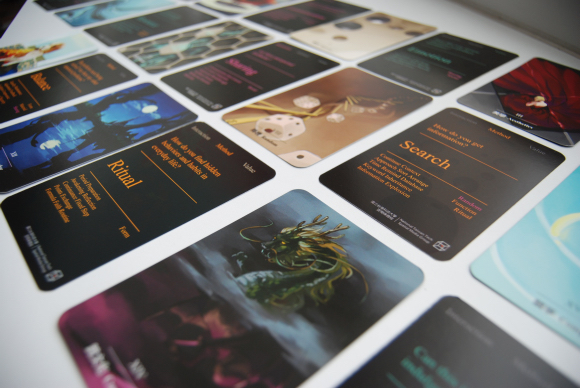
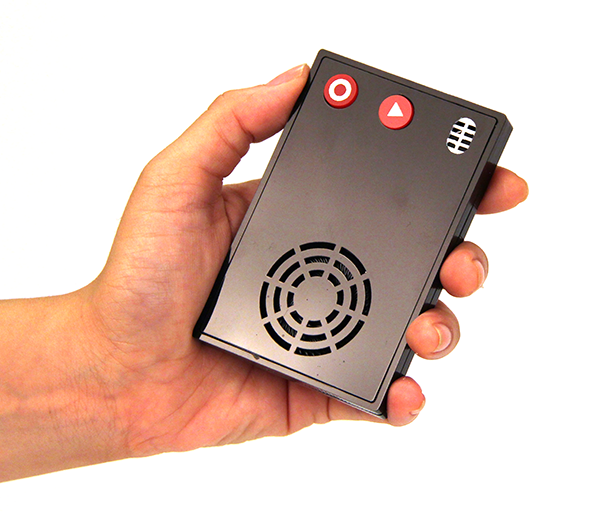
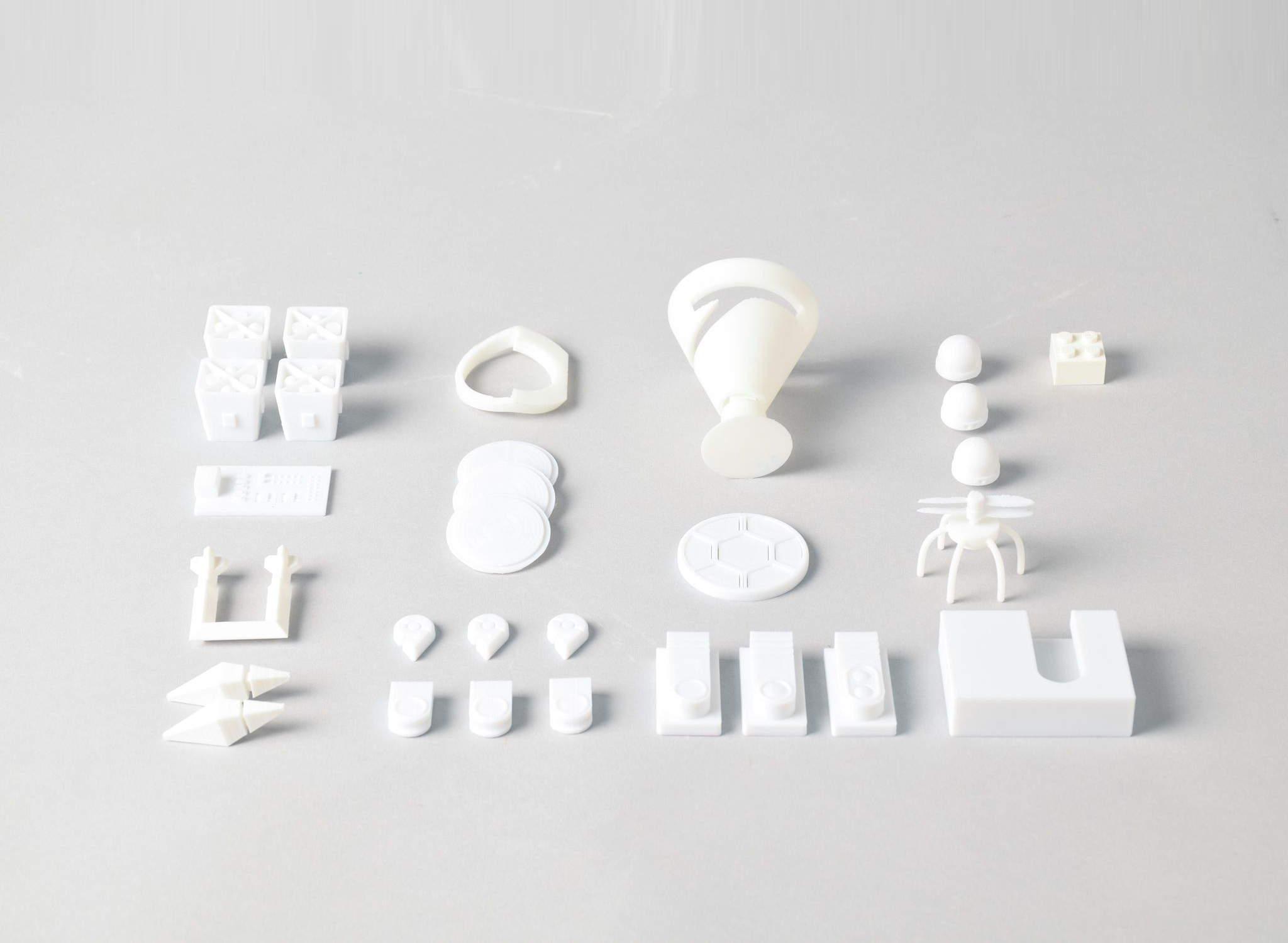
Prompting Novel Technology Futures by Design Fiction and Speculative Approaches
It has always been a challenge to speculate or imagine novel technology futures. Since 2016, in collaborating with a large-scale interdisciplinary team in the NTU IoX Center and Intel we designed for, we took design fiction as an approach to stiring their futuristic imaginations. We constructed fictional representations of possible future worlds around the emerging technologies in the IoX center.
The four design fictions are: (d) Human Augmentation API film ([web link]). We used motion graphics to carve out discursive spaces around Human Augmentation API, which presented a vision, collective of beings. (e) NTU IoX Center Capstone. We used design proposals to invite creative and technological imagination around smart manufacturing in the futures. (f) Data Collection Scenarios on Meccanoid Assembly([web link]). We crafted speculations by acting and the after-effects of the film to express two core issues, including the ability gap between experts and apprentices, and how IoX tech (e.g., machine learning) bridges the gap. These scenarios may invite the research engineers inside/outside the center to imagine and contribute to the technology dreams they really desired. The film has anchored critical discussions around the "data collection" topic in the Intel Workshop on April 27, 2018. (g) Soundscape Fiction. In this project, we explored an alternate and experiential way to deliver fictions and designed the Quartet Tubes, including four tubes with object, ambient, environment sounds, and music. That prompts situated listening as speculations. These designs may spark a debate on what the acceptable or feasible future implementations are. Moreover, these designs also invite our audience to imagine novel technology possibilities around their technical projects.
- Human Augmentation API: Motion graphics about HAAPI carve out discursive spaces toward the goal of a collective of beings
- NTU IoX Center Capstone: Design proposals invite technology imagination around smart manufacturing
- Data Collection Scenarios on Meccanoid Assembly: Acting constructs speculations
- Soundscape Fiction: Situated listening as speculation
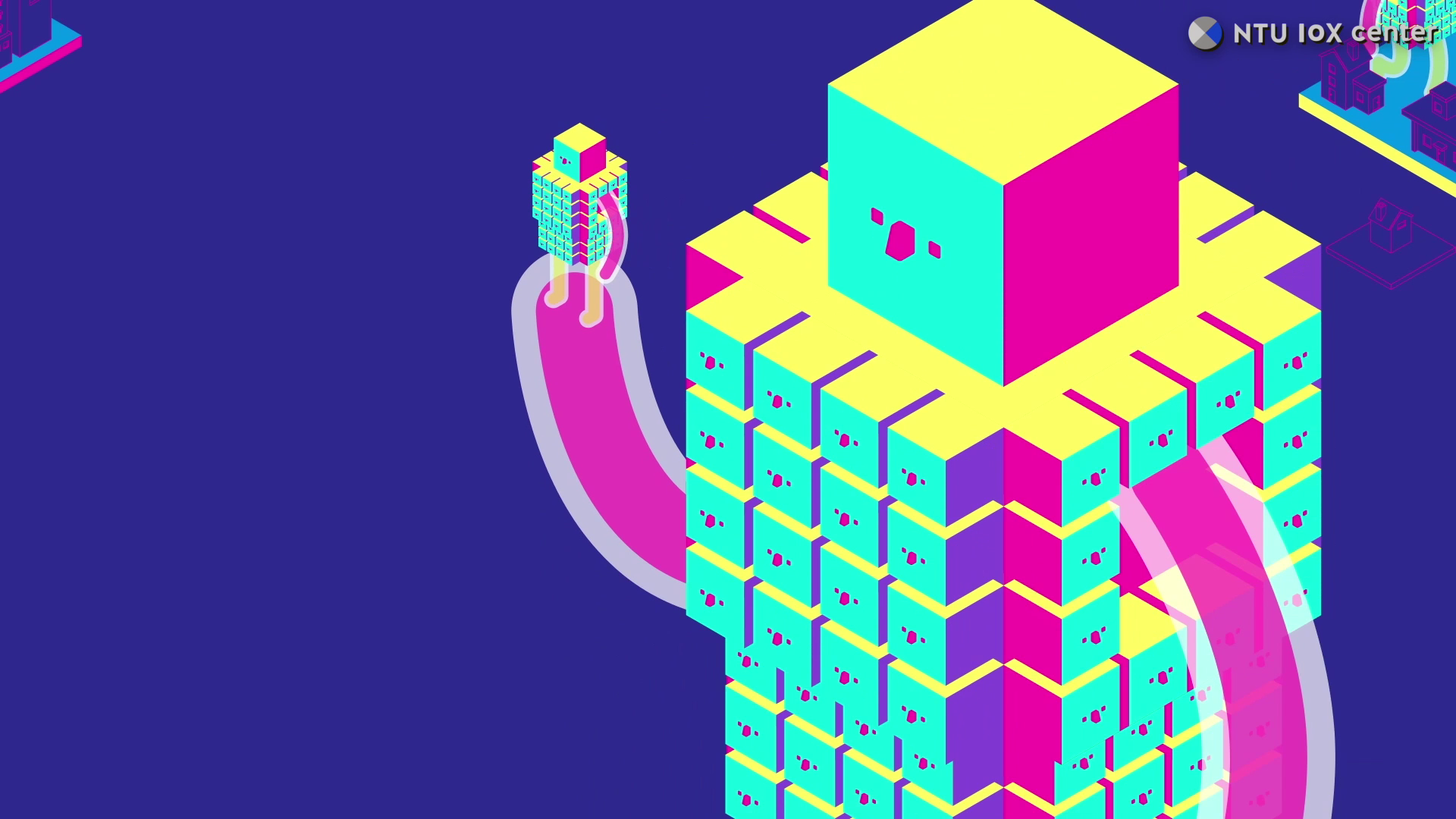
[film]
Directors of NTU IoX: Jane Yung-Jen Hsu and Bing-Yu Chen
Film Producers: Rung-Huei Liang and Lin-Lin Chen
Film concepts originated from Yi-Ping Hung (Collective Beings), Liwei Chan, and Rong-Hao Liang (Human Augmentation API)
Production Designers: David W. Chung, Yaliang Chuang, Yu-Ting Cheng, Ya-Han Lee, Wen-Wei Chang, Wilson Wang, and Cheng-Xun Yu
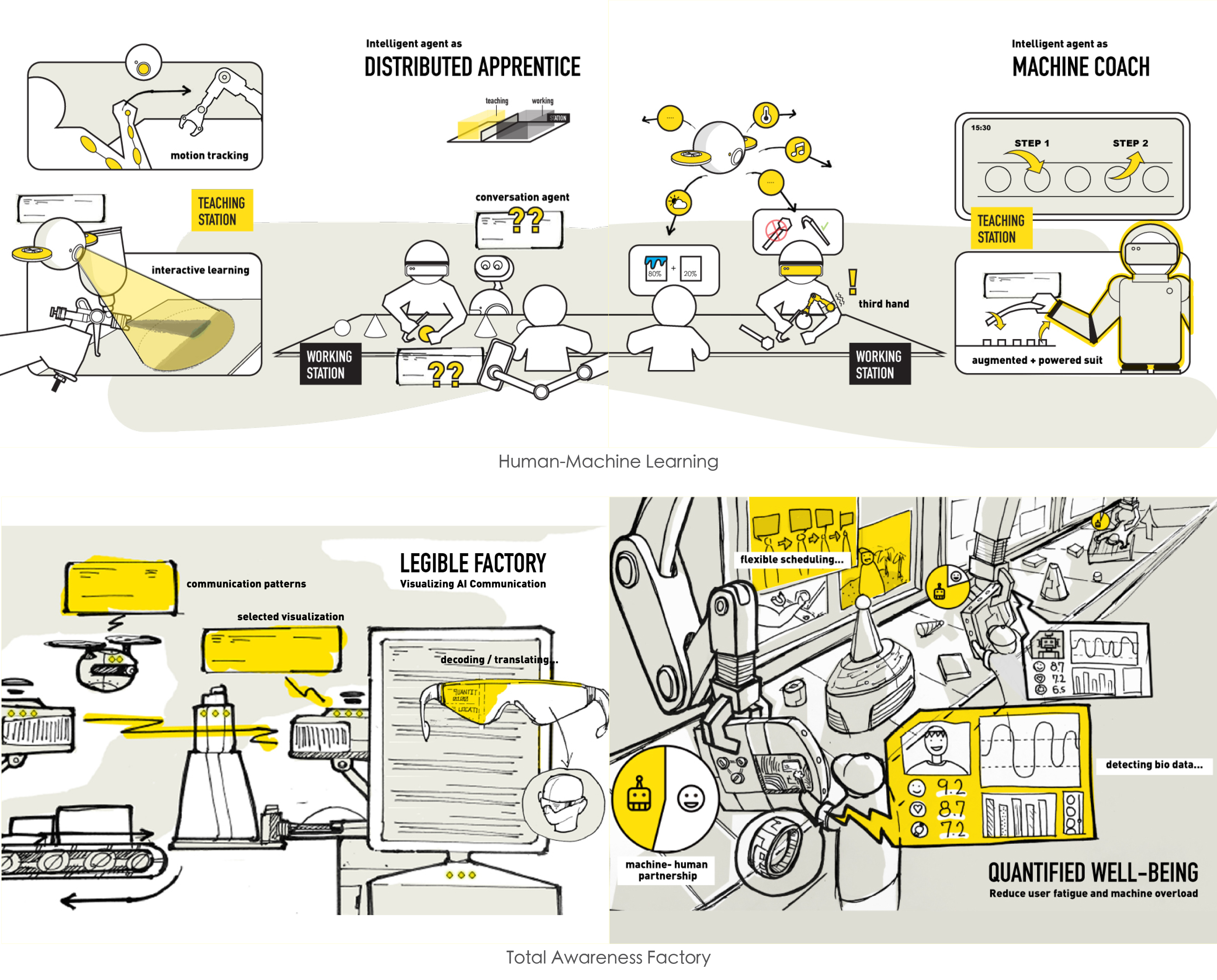
PI: Lin Lin Chen, Co-PI: Rung-Huei Liang, and design researchers: Yu-Ting Cheng, David Chung, Ya-Han Lee, Cheng-Xun You, Wilson Wang, Wen-wei Chang, Shu-Hsiang Chang, Guo-Ling Tsai, Hao-Hsiang Lin, Heng-An Lin, Joe WC Tsa
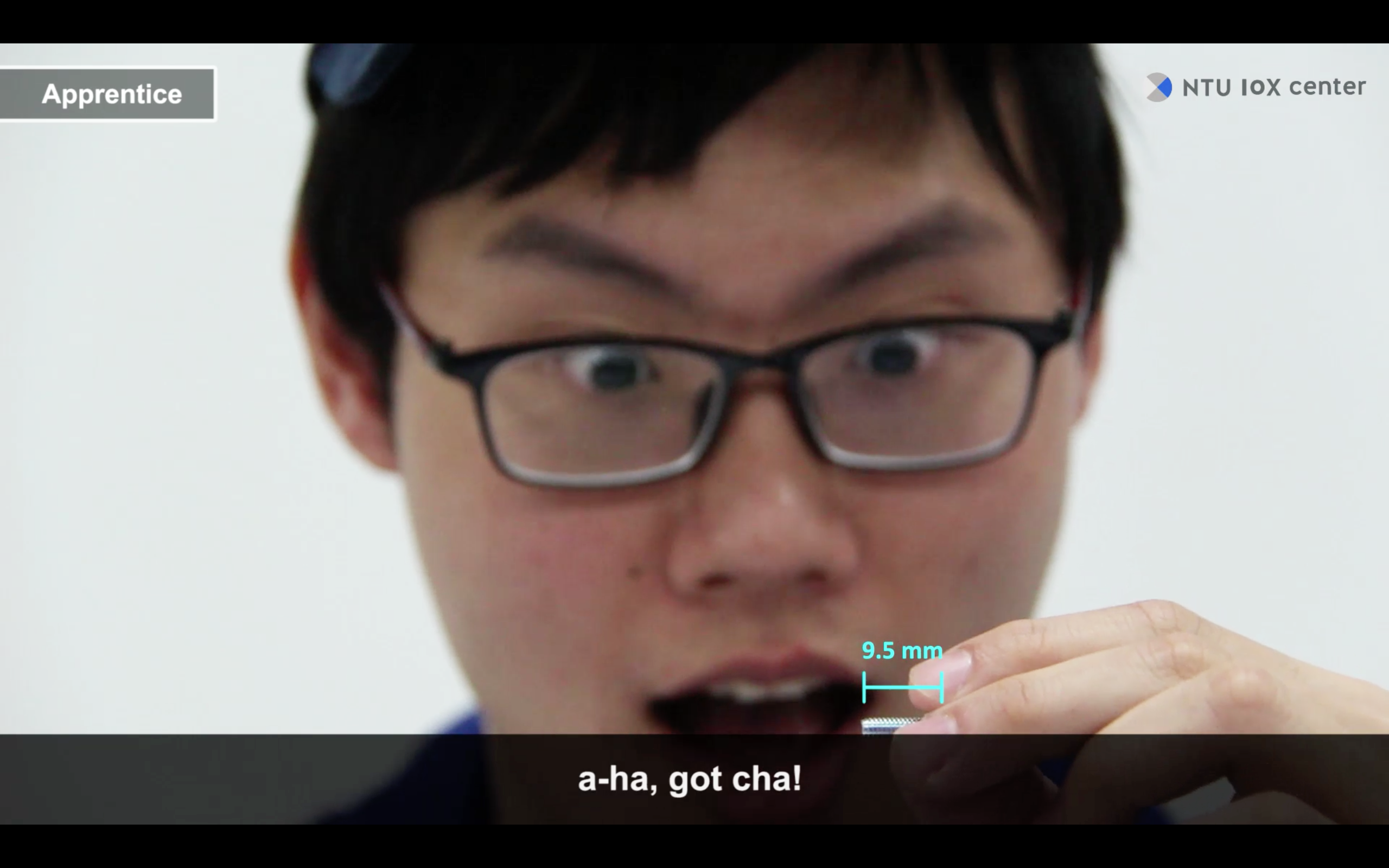
[film]
The film addressed two core issues: (1) the ability gap between experts and apprentices, and (2) how IoX tech, such as machine learning, can bridge this gap. Based on that, the film also supported discussions around the "data collection" topic in the Intel Workshop (27 April, 2018).
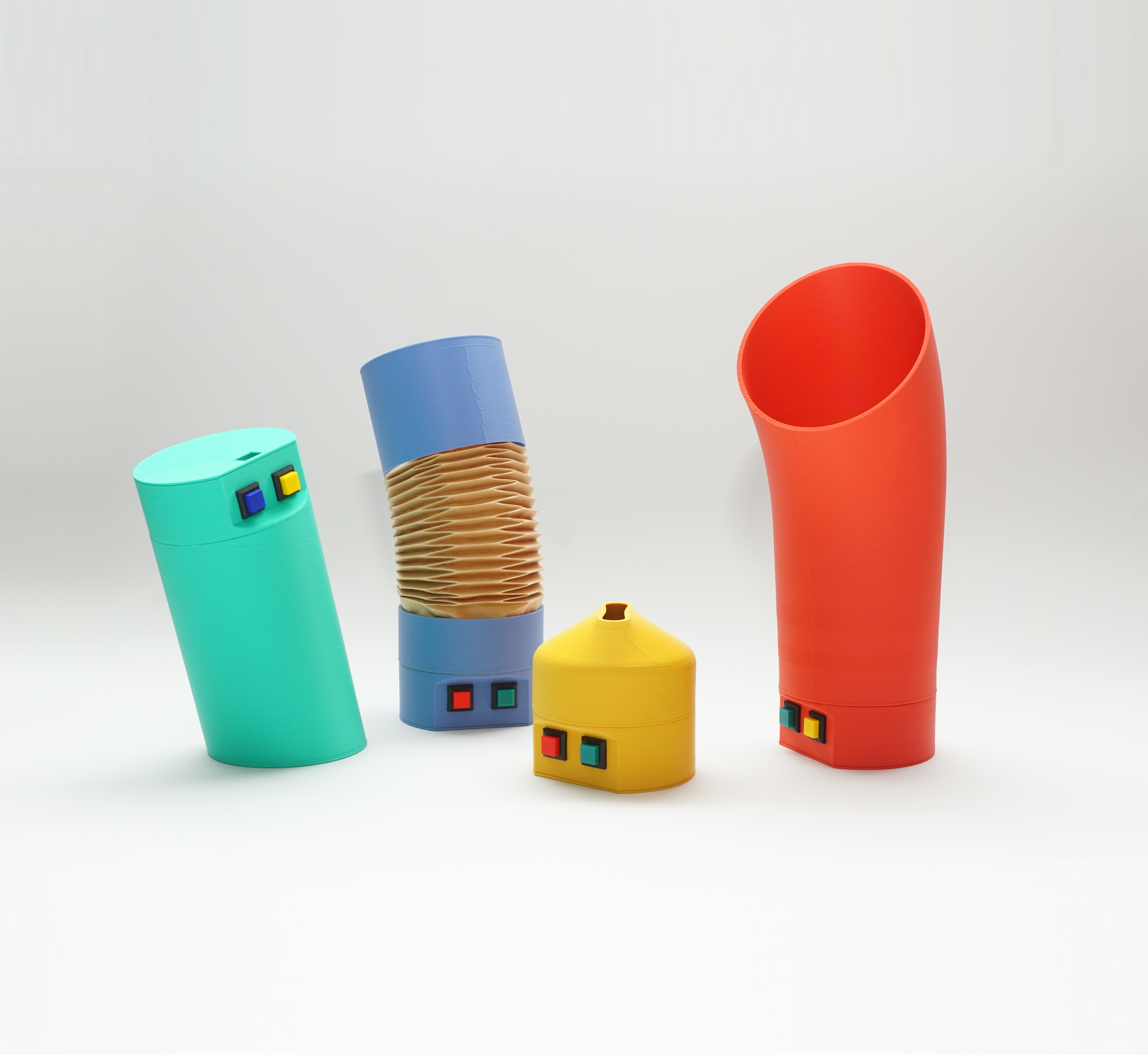
PI: Rung-Huei Liang, Co-PI: Wenn-Chieh Tsai, and design researchers: Wei-Ming (David) Chung, Bowen Kong, MengChi Liu, Yin Huang, Fu-Chieh Chang.
Playful Designerly Tools Supporting Creative Cross-domain Collaboration
Cross-domain collaboration continues to be a challenge. Working with different professions in OpenHCI or NTU IoX Center, we faced complicated problem spaces and diverse domain interests. To bridge their epistemic differences, we explored playful and tangible forms of designerly tools. We presented (h) Interaction Tarot ([web link]; Chung and Liang, 2015; Chung and Liang, 2015; Chung and Liang, 2015; Chung, 2017), (i) Once Upon a Future ([web link]; Cheng et al., 2018; Chung and Liang, 2021), and (j) NTU IoX Center Capstone Deck to support our target audience in communicating their ideas and to prompt creative synergy across different research domains.
In (h), I volunteered to co-organize the OpenHCI workshop in 2012 and 2013. In 2014, 2015, and 2016, I was the workshop mentor, specializing in TA training, facilitating brainstorming with Interaction Tarot, giving design critiques, and providing consultancy. The archetypal framework of the Interaction Tarot enabled cross-domain communication and collaborations. Moreover, workshop members used the imagery of its visual design to make storytelling and construct scenarios. In (i), I designed the NTU IoX Center Capstone Deck for our research partners in the center and in Intel to playfully compose future scenarios and support cross-project synergy. In (j), we built Once Upon a Future, an audio drama board game for the research partners in the center to facilitate future co-creation.
- Interaction Tarot: Archetypal design enables storytellings for cross-domain communication and collaboration
- NTU IoX Center Capstone Deck: Composing future scenarios and technology cards supports cross-project synergy
- Once Upon a Future: Audio drama board game for future co-creation
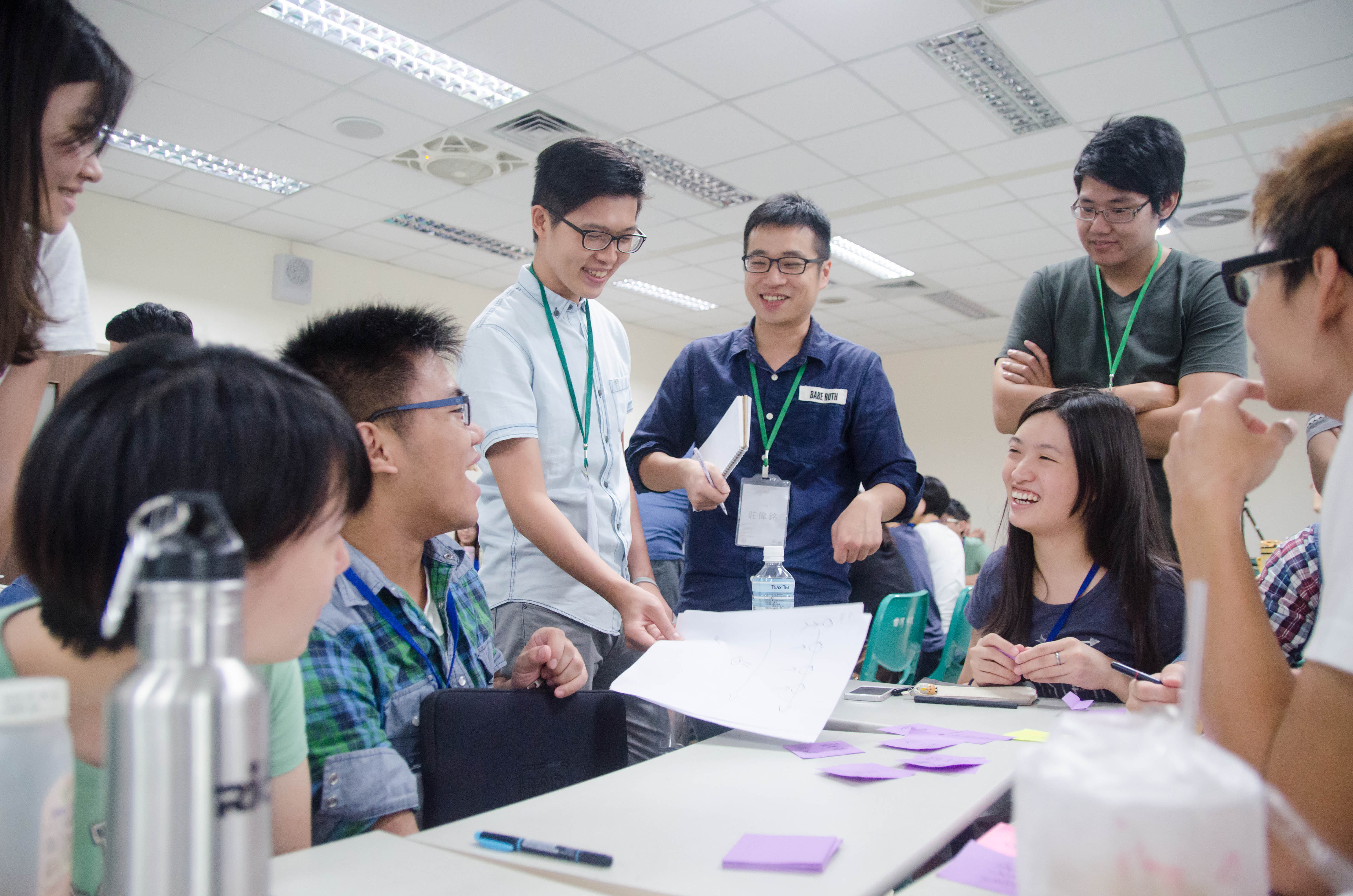
From 2012 to 2017, I volunteered to co-organize OpenHCI, a multidisciplinary design workshop focused on human-computer interaction (HCI). The workshop involved master and Ph.D. students from different disciplines in universities across Taiwan. The goal of OpenHCI was to explore new or alternative interaction possibilities through prototyping artifacts. Participants were recruited from various disciplines, including interaction design, art, design, electronic engineering, computer science, music, and social science. In 2014 and 2015, I served as the design mentor for OpenHCI, coaching and supporting students in needfinding for their interaction design projects. To bridge the epistemic differences of the participants, I introduced Interaction Tarot (2015), a set of archetype-based designerly tools from our lab- Spatial Media Research Group, to the early design phase of the OpenHCI workshop. The archetypal design approach facilitated cross-domain communication and allowed the participants to build a common language for the team.
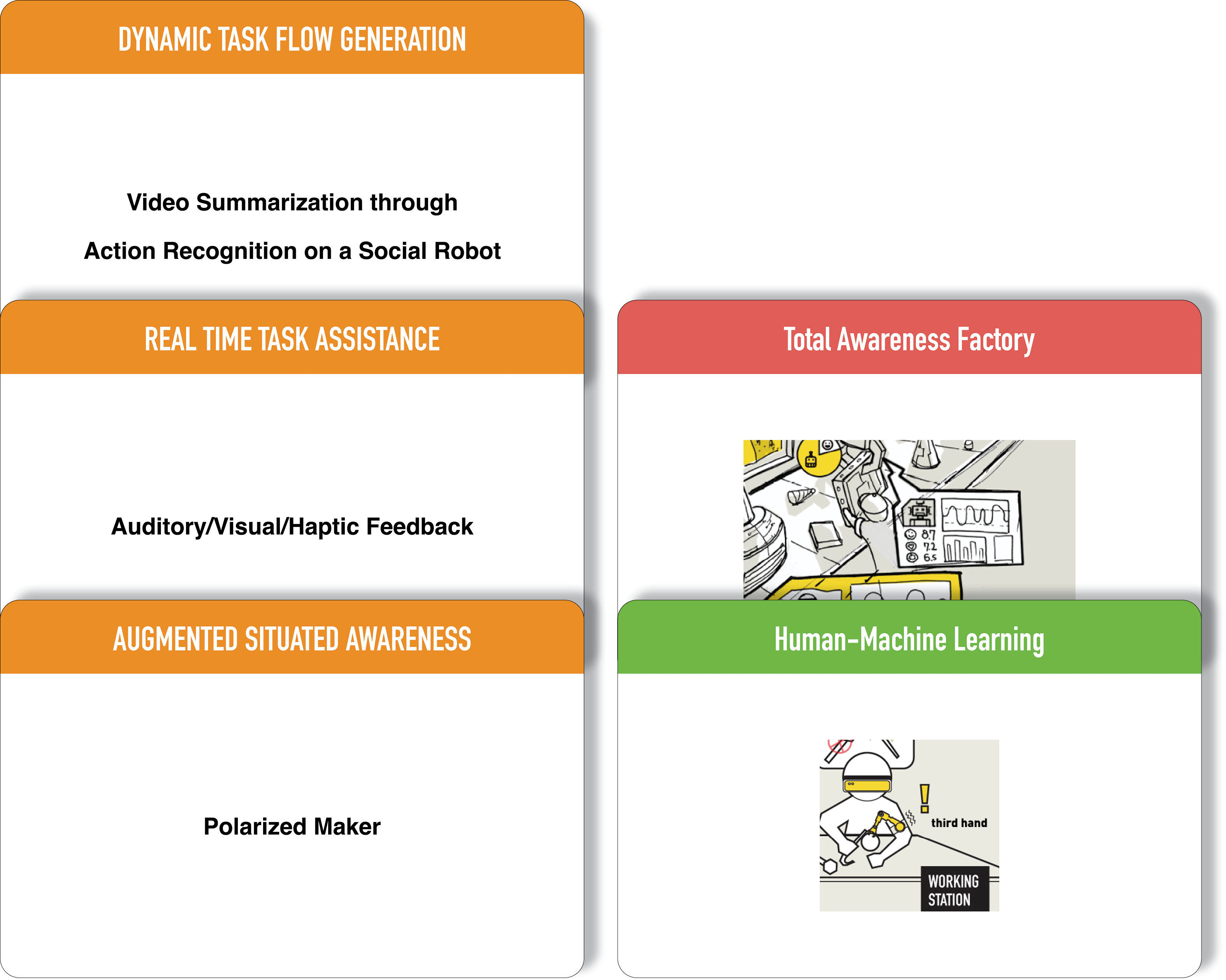
PI: Lin Lin Chen, Co-PI: Rung-Huei Liang, and design researchers: Yu-Ting Cheng, David Chung, Ya-Han Lee, Cheng-Xun You, Wilson Wang, Wen-wei Chang, Shu-Hsiang Chang, Guo-Ling Tsai, Hao-Hsiang Lin, Heng-An Lin, Joe WC Tsai
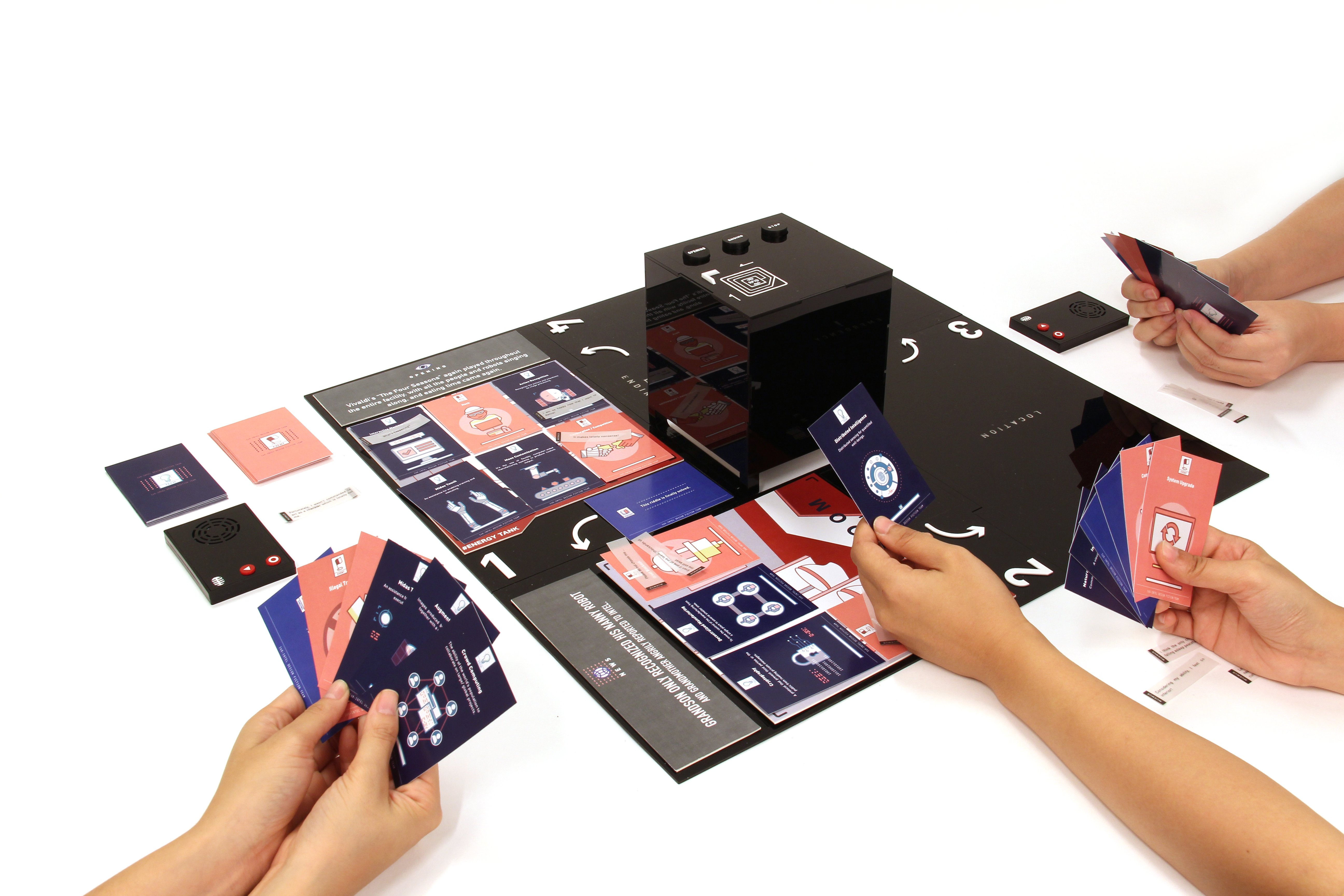
Envisioning futures in a project collaboration continues to be a challenge. Drawing on the suspension of disbelief in audio drama and the episodic memory theory about creativity, we built a four-act audio drama board game, Once Upon a Future ([web link]; Cheng et al. 2018; Chung and Liang, 2021), for eliciting creative narration. The game guided engineers and designers to enact and co-create future application scenarios by playing cards along with fictional soundscapes.